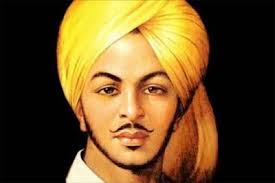Bhagat Singh’s Birth Anniversary | 28 Sep 2020
Why in News
28th September is the birth anniversary of revolutionary freedom fighter Bhagat Singh.
Key Points
- Born in 1907 in Lyallpur district (now in Pakistan), Bhagat Singh grew up in a Sikh family deeply involved in political activities.
- He belonged to a generation that was to intervene between two decisive phases of the Indian national movement - the phase of the 'Extremism' of Lal-Bal-Pal and the Gandhian phase of nonviolent mass action.
- In 1923, Bhagat Singh joined the National College, Lahore which was founded and managed by Lala Lajpat Rai and Bhai Parmanand.
- The College was set up as an alternative to the institutions run by the Government, bringing to the field of education the idea of Swadeshi.
- In 1924 in Kanpur, he became a member of the Hindustan Republican Association (HRA), started by Sachindranath Sanyal a year earlier. The main organiser of the Association was Chandra Shekhar Azad and Bhagat Singh became very close to him.
- It was as a member of the HRA that Bhagat Singh began to take seriously the philosophy of the Bomb.
- Armed revolution was understood to be the only weapon with which to fight British imperialism.
- In 1928, HRA was renamed from Hindustan Republican Association to Hindustan Socialist Republic Association (HSRA).
- In 1925, Bhagat Singh returned to Lahore and within the next year he and his colleagues started a militant youth organisation called the Naujawan Bharat Sabha.
- In April 1926, Bhagat Singh established contact with Sohan Singh Josh and through him the 'Kirti Kisan Party' which brought out the monthly magazine Kirti in Punjabi.
- For the next year Bhagat Singh worked with Josh and joined the editorial board of Kirti.
- In 1927, he was first arrested on charges of association with the Kakori Case accused for an article written under the pseudonym Vidrohi (Rebel).
- To take revenge for the death of Lala Lajpat Rai, Bhagat Singh and his associates plotted the assassination of James A. Scott, the Superintendent of Police. However, the revolutionaries mistakenly killed J.P. Saunders. The incident is famously known as Lahore Conspiracy case (1929).
- In 1928, Lala Lajpat Rai had led a procession to protest against the arrival of the Simon Commission. The police resorted to a brutal lathi charge, in which Lala Lajpat Rai was severely injured and later succumbed to his injuries.
- Bhagat Singh and B.K. Dutt threw a bomb on 8 April, 1929 in the Central Legislative Assembly, in protest against the passing of two repressive bills, the Public Safety Bill and the Trade Dispute Bill.
- The aim, as their leaflet explained, was not to kill but to make the deaf hear, and to remind the foreign government of its callous exploitation.
- Both Bhagat Singh and B.K. Dutt surrendered thereafter and faced trial so they could further promote their cause. They were awarded life imprisonment for this incident.
- However, Bhagat Singh was re-arrested for the murder of J.P. Saunders and bomb manufacturing in the Lahore Conspiracy case. He was found guilty in this case and was hanged on 23rd March, 1931 in Lahore along with Sukhdev and Rajguru.
- Every year, March 23 is observed as Martyrs’ Day as a tribute to freedom fighters Bhagat Singh, Sukhdev, and Rajguru.
